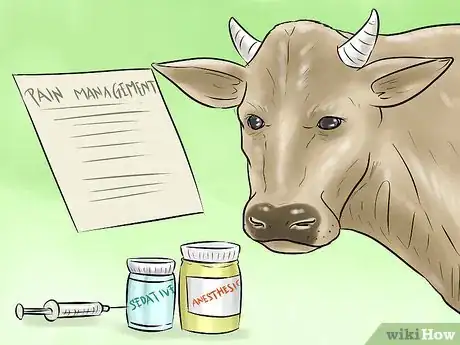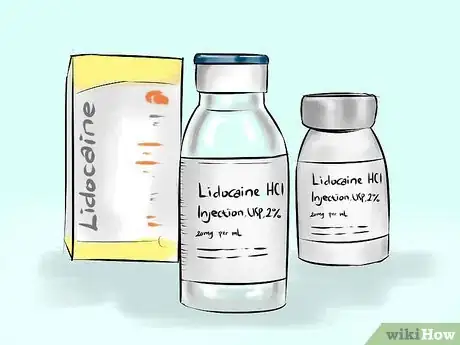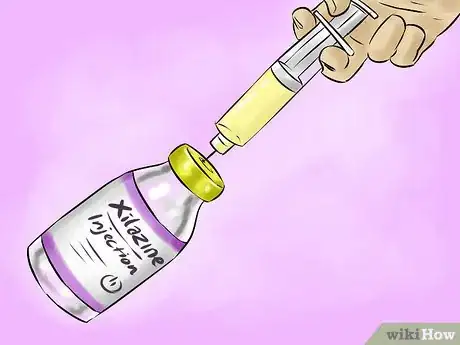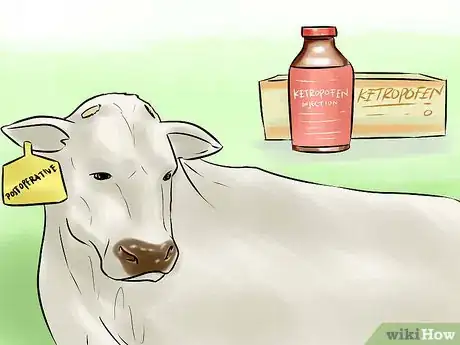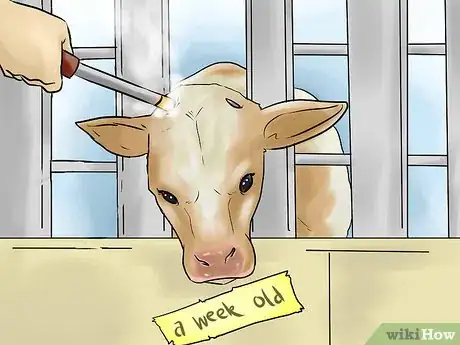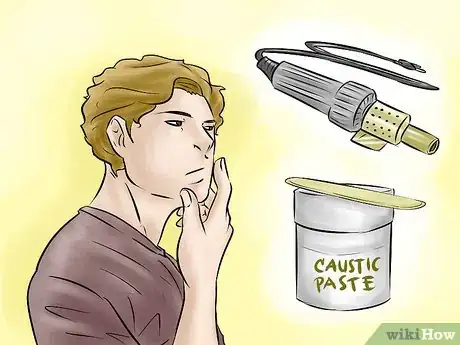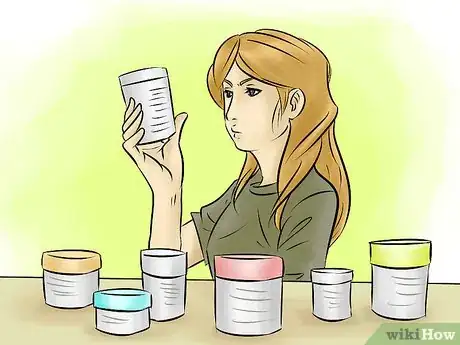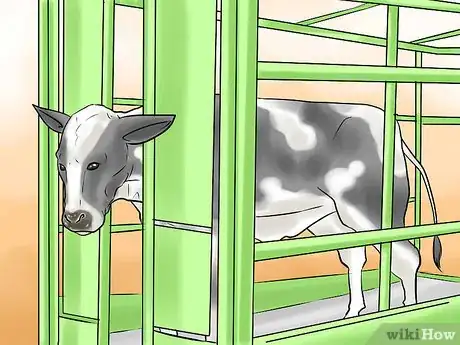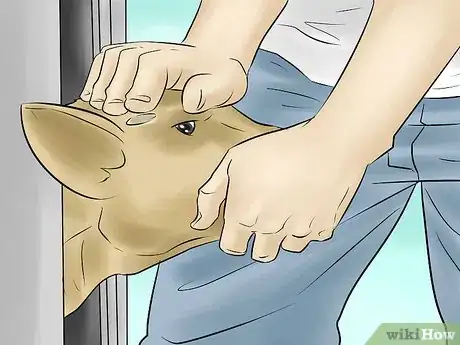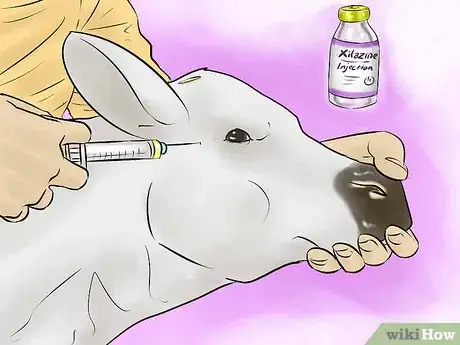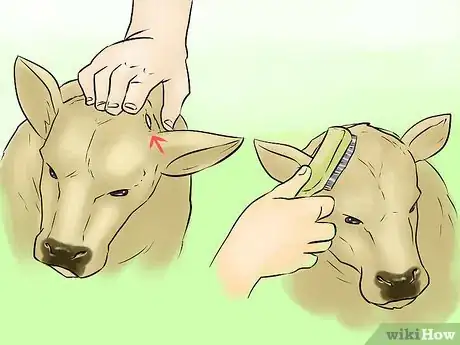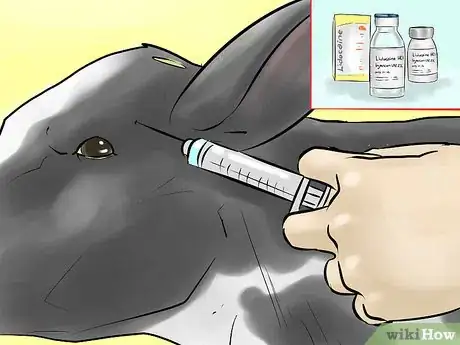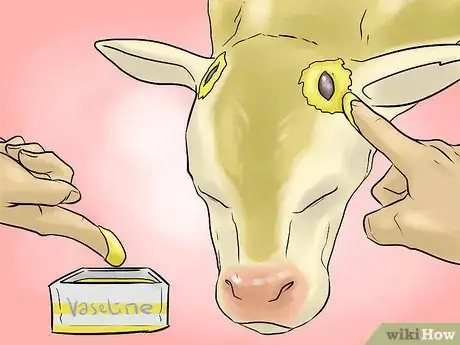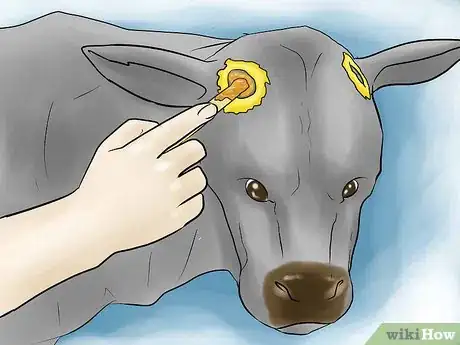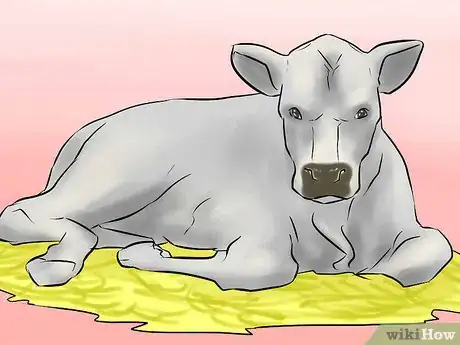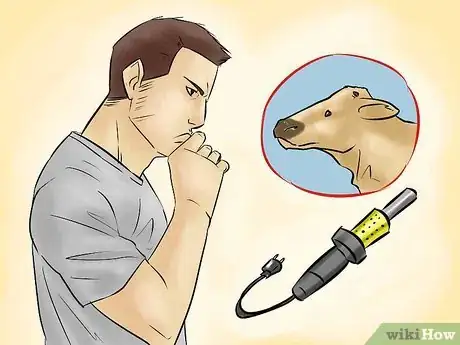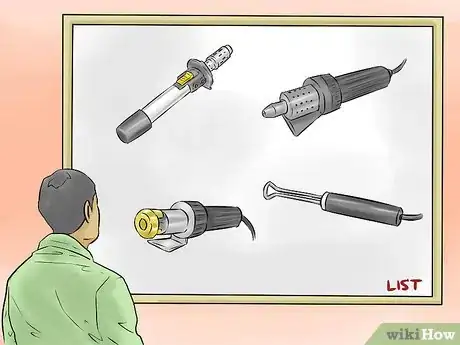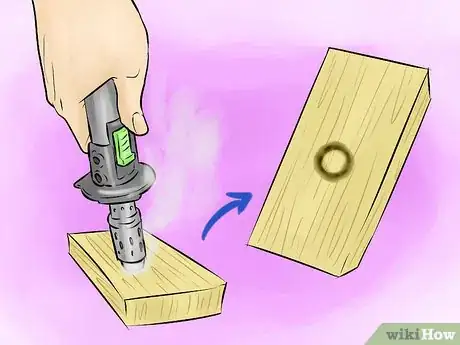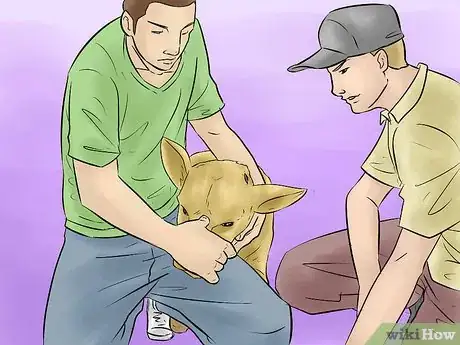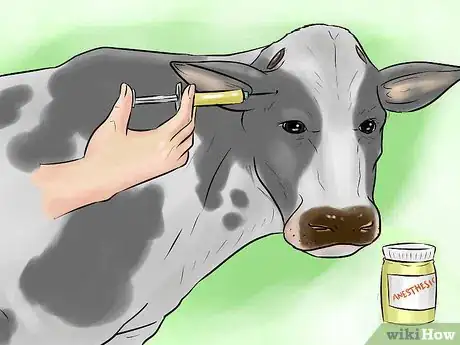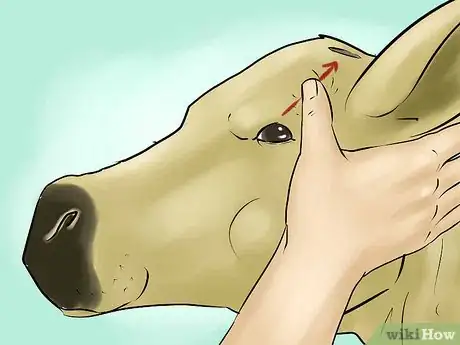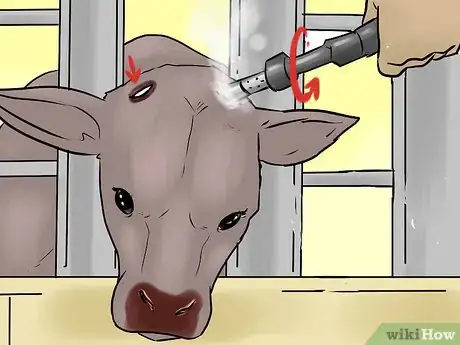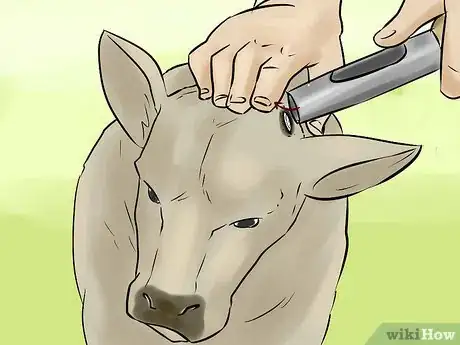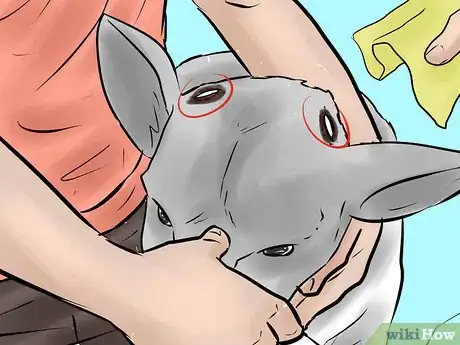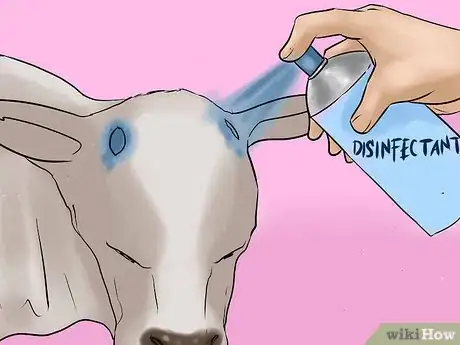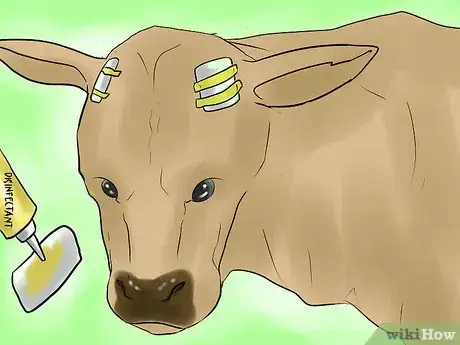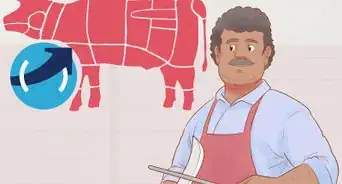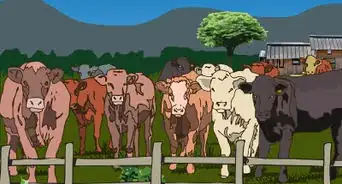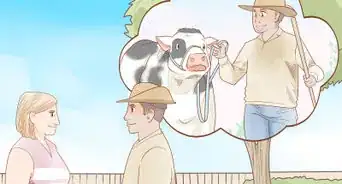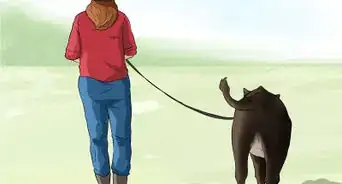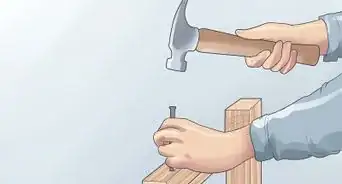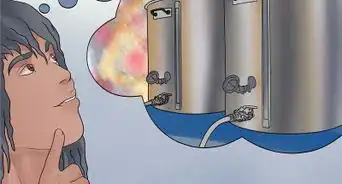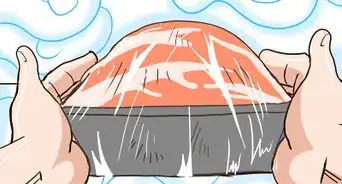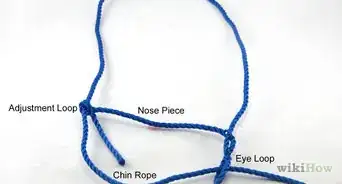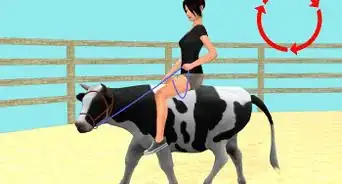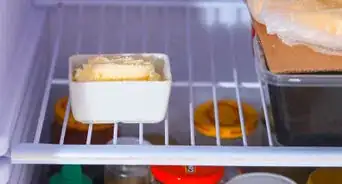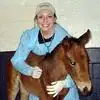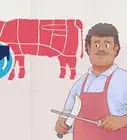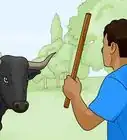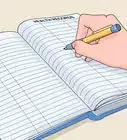This article was co-authored by Ryan Corrigan, LVT, VTS-EVN. Ryan Corrigan is a Licensed Veterinary Technician in California. She received her Bachelor of Science in Veterinary Technology from Purdue University in 2010. She is also a Member of the Academy of Equine Veterinary Nursing Technicians since 2011.
There are 7 references cited in this article, which can be found at the bottom of the page.
This article has been viewed 55,865 times.
Dehorning is a basic farm management procedure when it comes to raising cows. In fact, the American Veterinary Medical Association (AVMA) recognizes it as a necessary practice for human and animal safety. Dehorning prevents injury both to human handlers, other cows, dogs and other animals that work close to cows or beef cattle.[1] However, there are some things you should keep in mind when considering dehorning your cows, including pain management, whether you plan to use caustic paste or hot iron, and how you will help your cow to recover.
Steps
Minimizing Your Cow’s Pain
-
1Understand why pain management is important. Dehorning is a painful operation because there is a sensitive nerve, the corneal nerve, that is present in the horn. This nerve runs from the base of the cow’s eye into the base of the horn. Before dehorning a cow, it is recommended that local anesthetics be injected into the corneal nerve to remove any pain that might be felt by the cow during dehorning.
- The following local anesthetics and sedatives can be used and should be combined for a multimodal approach.
-
2Consider lidocaine. Lidocaine is an anesthetic agent that acts by blocking the nerve signals between sensory nerves where it is applied or injected. It is a local anesthetic, which means that it can only be applied to areas where the procedure will be performed. It is commonly injected under the skin around the base of the horn to block sensation in that area.
- There is also a topical lidocaine that you can applied during milder procedures.
- The dosage is generally 3 to 5 milliliters (ml) of 2% lidocaine, 10 to 20 minutes prior to the disbudding[2] (the word used to describe the dehorning of the cow).
Advertisement -
3Consider giving your cow Xylazine. Xylazine is a potent α2 (Alpha 2) adrenergic agonist, and is classified as a sedative and analgesic. It blocks certain nerve receptors in the nervous system, and will cause a depression of the central nervous system (CNS). This means that 10 to 20 minutes after injection, the cattle will become sedated and will feel less pain during the procedure.
- The regular dosage for Xylazine is 0.1 to 0.2 mg per kg of body weight. It is injected intramuscularly 10 to 15 minutes before the surgical procedure.[3]
- Xylazine is not approved for use in cattle in USA and has a withdrawal period of 7 days (12). Consult your veterinarian before using this drug in meat type and milking cows that are intended for slaughter and are already milking.
-
4Use ketoprofen for postoperative management. Ketoprofen is a nonsteroidal anti-inflammatory drug (NSAID) that has anti-fever, anti-inflammatory, and pain relieving properties.
- The normal dose is 3 mg per kg of body weight. It can be injected intramuscularly.
-
5Keep your cow’s age in mind when considering pain management. If possible, dehorn your cow within a week of her being born. Doing this will lessen the pain she feels because at that age, the horn bud is not yet attached to the base of the skull.
- The bud of the horn only begins to attach to the base of the skull and undergo nerve development at around the 2 month mark. That is part of why early dehorning is preferable.
-
6Determine which method of dehorning you will choose. There are two methods you can choose from: disbudding with caustic paste, or disbudding with a hot iron. Many farms in the United States use the hot iron to remove cow horns.
- In the United Kingdom dehorning using caustic paste disbudding is recommended in cows that are a week old.[4]
Disbudding with Caustic Paste
-
1Select the paste you will use. There are many pastes out on the market. Always read the labels of these products; many of these products can be used on calves that are up to eight weeks old, and can also be used on calves immediately after birth. However, some pastes may have an age limit, so always double check.
-
2Restrain the calf. The first step in using a dehorning paste is to restraint the calf by placing it inside a restraining chute. A restraining chute is a metal cage composed of metal tubes. It can fit one cow or calf at a time, and has a special space in front where the cow’s head can fit. Once the head is passed through the open space, special bars or tubes can be fixed and adjusted so that the cow’s head can be firmly held in place.
-
3Immobilize the cow’s head. Once the cow’s head is in place, have an assistant move the cow’s head towards the assistant’s thighs. To do this, have the assistant push the cow’s muzzle with his left hand so that the cow’s muzzle rests against the assistant’s thigh. For the right horn, the assistant would use his right hand.[5]
- Another way to restrain a calf is by placing it in a chute and having an assistant push the calf forward so that the head protrudes outside of the chute. Another assistant can then use his left hip to push the head of the calf against the vertical post of the chute, making the head turn at a right angle with the vertical post of the chute. The left hand is then used to support and hold the back of the head. In this way the horn buds are exposed while the animal is immobilized.
-
4Use a sedative if you do not have a chute to put your cow in. The calf can also be restrained by administering a sedative like Xylazine. Once the calf is sedated, the calf is gently laid down in a lying position and the front and hind limbs are tied down.
-
5Locate the horn bud. Once the calf is sedated, feel for the horn bud on the calf’s head. Gently trim away hair on and around the horn bud. Lightly brush the horn bud with a small wire brush.
- Do not brush the bud too hard or else it may bleed.
-
6Apply 3 ml to 5ml of 2% lidocaine into the base of the horn bud. Locate the occipital groove, which runs behind the cow’s eye and into the horn. Once you find the groove, inject the lidocaine at the base of the bud.
- Ask your vet or an experienced farmer or rancher to show you the proper positioning and injection process for the first time.
- Make sure to hold the syringe at a 45-degree angle away from the eye. Wait 10 to 20 minutes for the medication to take effect.
-
7Apply a protective layer of vaseline around the base of the horn bud. Apply the vaseline with your index finger and make sure that it does not get on the horn bud.
-
8Apply the caustic paste. Using a wood applicator or a syringe, apply a thin film of dehorning paste over the entire horn bud and over a small ring of adjacent skin. Only one application of the paste is necessary.
- In calves that are one week of age or younger, the entire application area may only be the size of a nickel.
- In calves that are older than one week, the application area may be the size of a quarter.
-
9Allow the calf to rest. Once the application has been placed on the horn buds, allow the calf to rest away from other animals and in a place protected from the elements.
Disbudding with Hot Iron
-
1Consider the benefits and disadvantages of using a hot iron. The advantage of using a hot iron for disbudding is that it is bloodless and can be used in calves that are up to four months old. The disadvantages are that is is more painful that caustic paste, and it requires more restraint of the cow in order to keep you safe.[6]
-
2Select your dehorner. You will need a heavy duty electric hot iron dehorner. There are many dehorners to choose from, and some may be made for a specific size of cow. Check the label before selecting your dehorner to make sure you are getting a dehorner that will work on the calf (or calves) you wish to dehorn.
- Once you have purchased your dehorner, plug it into an outlet to let it charge. It has automatic temperature control and maintains heat at 100 °F (38 °C).
-
3Make sure the iron is hot enough. To do this, find a piece of wood and press the dehorner into it. If it makes a deep, dark ring in the wood within 10 seconds, it is hot enough.[7]
- After the test, wait at least three minutes before using the disbudding iron on the calf.
-
4Have an assistant restrain the cow. Have your assistant press the cow’s head against his thighs using both hands. One hand should hold the head against his thighs, while the other hand should restrain the muzzle.
- When restraining the cow, use walls to restrict the cow’s movement. Do this by pressing your hips against the body of the cow and sandwiching the cow between you and the wall.
-
5Administer the local anesthetic. Find the occipital groove, which runs behind the eye and up into the horn. Take the needle guard off and place the syringe in the flat of your hand. Use your index finger to stabilize the needle by pressing it on its base.
- Use the other hand’s thumb to locate where the horn bud is, and inject the anesthetic at the base of the bud, making sure that the syringe is held at a 45 degree angle away from the cow’s eye. Inject 3 to 5 ml of Lidocaine per horn bud.
-
6Gently massage the anesthetic into the area around the horn bud. Release the needle and use your hand to massage the horn bud and the area around the horn bud to help the anesthetic sink in.
- Let the anesthetic sink in for 10 to 20 minutes.
-
7Apply the hot iron to the horn bud. Place the hot iron over the horn bud and twist several times. Continue to do this until you hear the skin pop.
- Look for a white ring, which means that you have burned enough of the bud.
-
8Remove the horn bud. Take the horn bud out by using the iron like a scoop and flicking it so that the bud snaps out. Doing this will leave a clean circle that is sealed and does not bleed.[8]
- Look for a small white circle around the depressed area where the horn bud used to be. You should also check for bleeding, though the hot iron should not have drawn any blood. When you determine that the horn has been removed successfully, consider giving your cow some pain medication (this will be covered in the next section) and release the cow back into the stall or out into the field.
Helping Your Cow to Recover
-
1Check the area where the horn bud was for any bleeding. If you notice that the area where the horn bud was is bleeding, apply pressure to the area using folded gauze pads. After several minutes of applying pressure, the bleeding should subside.
- If the bleeding does not subside, you can use a hot iron to cauterize the area, or you can call a veterinarian.
-
2Keep flies from landing on the wound by spraying disinfectants. It is important to try to keep the dehorned area from becoming infected. It is particularly important to keep flies from landing on the area, as they can carry diseases and bacteria. Use fly repellents to keep the pests away.
- Two different kinds of fly repellents that can be used in this instance are gusanex and negasunt.
-
3Place gauze pads on the wound. To keep the wound from getting infected, you can place gauze pads over the wound. However, these pads must be changed daily for ten days.
- You can use an antibacterial dressing along with the gauze pads to give the cow extra protection against infection.
Expert Q&A
-
QuestionHow do you stop the bleeding after talking the horn off by wire rope?
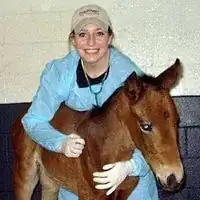 Ryan Corrigan, LVT, VTS-EVNRyan Corrigan is a Licensed Veterinary Technician in California. She received her Bachelor of Science in Veterinary Technology from Purdue University in 2010. She is also a Member of the Academy of Equine Veterinary Nursing Technicians since 2011.
Ryan Corrigan, LVT, VTS-EVNRyan Corrigan is a Licensed Veterinary Technician in California. She received her Bachelor of Science in Veterinary Technology from Purdue University in 2010. She is also a Member of the Academy of Equine Veterinary Nursing Technicians since 2011.
Licensed Veterinary Technician In the future do not use wire rope. You should call a veterinarian to look at this - they will also be able to check for infection from the wire.
In the future do not use wire rope. You should call a veterinarian to look at this - they will also be able to check for infection from the wire.
References
- ↑ http://www.dehorning.com/faqs/
- ↑ http://wildpro.twycrosszoo.org/S/00Man/PainRumOverviews/PainProc/P03PainPrev_Calf_Disbud.htm
- ↑ Veterinary Drug HandBook by Donald C. Plumb; Iowa State University Press pp. 402 – 405, 707-709
- ↑ http://www.dehorning.com/faqs/
- ↑ Disbudding Calves: Farmers Weekly Farm by XL Vets
- ↑ http://www.youtube.com/watch?v=n3RPrE6lWQM
- ↑ http://www.jefferspet.com/products/x-30-electric-dehorners
- ↑ Veterinary Drug HandBook by Donald C. Plumb; Iowa State University Press pp. 402 – 405, 707-709
